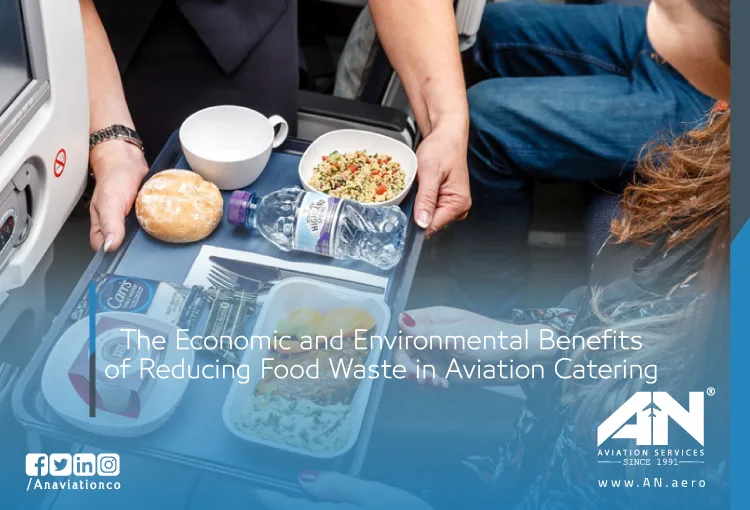
Aviation is a complex industry with many moving parts, from flight planning to passenger service. One area that often goes overlooked is airline catering food waste. While it may not be as visible as flight delays or luggage mishandling, the waste generated from food and beverages served on flights has a significant economic and environmental impact.
With millions of meals prepared for passengers every day, reducing food waste in airline catering is not just a matter of saving money—it’s also a crucial step toward improving sustainability in the aviation sector. In this blog, we will explore the economic and environmental benefits of cutting down on cabin waste and the role that artificial intelligence and better waste management practices can play in this transformation.
Understanding the Scale of Food Waste in Airline Catering
In the world of airline catering, significant amounts of food and drinks go to waste. According to reports, airlines waste millions of tonnes of food annually, much of which comes from leftover meals that passengers didn’t finish or meals that went unsold. Much of this food ends up in landfills, where it contributes to methane emissions—a powerful greenhouse gas that accelerates climate change.
The challenge lies in the complexity of catering for airlines. Every flight is different, with varying numbers of passengers and passenger preferences. Flight catering providers must prepare a wide variety of meals to accommodate diverse dietary needs, but this often results in excess food that cannot be reused. The lack of precise forecasting and a one-size-fits-all approach to meal planning often leads to unnecessary waste.
Economic Benefits of Reducing Food Waste
One of the most significant benefits of reducing food waste in airline catering is the potential for cost savings. Airlines spend large sums of money purchasing ingredients, preparing meals, and disposing of waste generated from unsold or uneaten food. By implementing more efficient catering practices and reducing waste, airlines can cut down on these costs significantly.
For example, better collection and separation of unused food could allow airlines to repurpose meals for other flights or donate them to local food banks. This would reduce the overall amount of food produced and allow airlines to save on food procurement and disposal costs.
Additionally, artificial intelligence (AI) tools can help optimize meal preparation based on passenger preferences, which can reduce overproduction. AI can analyze historical data and predict the number of meals needed based on flight occupancy, routes, and even past passenger behavior, resulting in more accurate meal preparation and reduced waste.
Environmental Impact: Reducing the Carbon Footprint
The environmental cost of airline catering food waste is considerable. Not only does the waste end up in landfills, but the production of that food also comes with its own environmental footprint. The water, energy, and raw materials required to grow, process, and transport the food are significant, and when that food is wasted, all these resources are wasted as well.
Reducing food waste can have a profound positive effect on the environment. According to studies, cutting down on food waste in catering facilities could reduce millions of tonnes of carbon emissions each year. Moreover, if airlines optimize their waste management processes and incorporate sustainability practices, such as composting or donating food, they would contribute less to the growing issue of landfill waste, helping to mitigate the effects of climate change.
The process of waste management can be improved by better planning, food donation programs, and collection and separation systems at airports. By diverting food waste from landfills to more sustainable options, airlines could significantly reduce their carbon footprint.
Practical Solutions for Reducing Waste in Airline Catering
So, what are some practical steps airlines and catering companies can take to reduce food waste? First, they must invest in better meal planning, which can be achieved through more accurate forecasting. Artificial intelligence and machine learning algorithms can be used to track data such as booking trends, meal preferences, and past consumption patterns, helping airlines prepare more accurate amounts of food.
Second, food banks and charities can help redirect unused meals to people in need. Many airlines already have partnerships with food banks that collect leftover food for redistribution. This not only reduces waste but also enhances the airline’s reputation by demonstrating a commitment to social responsibility.
Third, improving cabin waste management procedures is essential. Airlines can adopt systems that allow for easy separation of waste types, which would facilitate recycling and composting. More sustainable packaging options can also help to reduce the amount of non-recyclable material that ends up in landfills.
The Role of Passengers in Reducing Food Waste
Passengers also have a role to play in reducing airline food waste. Educating travelers on the importance of minimizing waste—such as finishing their meals or choosing not to take unnecessary snacks—can help create more mindful habits. Airlines can also consider offering smaller portion sizes or letting passengers customize their meal choices based on dietary preferences, which would reduce the chances of food being wasted.
Conclusion: A Win-Win for Airlines, Passengers, and the Planet
The benefits of reducing food waste in airline catering are clear: economic savings, a smaller environmental footprint, and improved social responsibility. By adopting more efficient planning techniques, leveraging artificial intelligence, and improving waste management, airlines can make substantial progress in mitigating food waste.
Furthermore, airlines that prioritize sustainability and food waste reduction are likely to see an improvement in their brand image, which resonates well with passengers who value eco-conscious practices. In the long run, reducing cabin waste is a win-win for both the industry and the environment.

